These Endangered Marine Animals Need Your Help
Published by Ocean Conservancy
We all love the ocean and the incredibly diverse array of wildlife that grace its waters, but not many people may realize just how threatened many of our ocean’s animals truly are. From whales and sea turtles to sharks and seals, there’s an ocean of risk out there when it comes to these animal’s ability to survive. Using the International Union for the Conservation of Nature’s (IUCN) Red List, a leading assessment, classification and ranking system for wildlife population vulnerability, I’ve gathered information on just five of the world’s endangered marine species as of May 2019. The IUCN ranks species on a 9-point scale demonstrating a species’ threat of extinction, which can be viewed below:


All of the species in this article are classified as Endangered (EN) or Critically Endangered (EN).
Being some of the most iconic marine species around, some of these animals may surprise you.
North Atlantic Right Whale
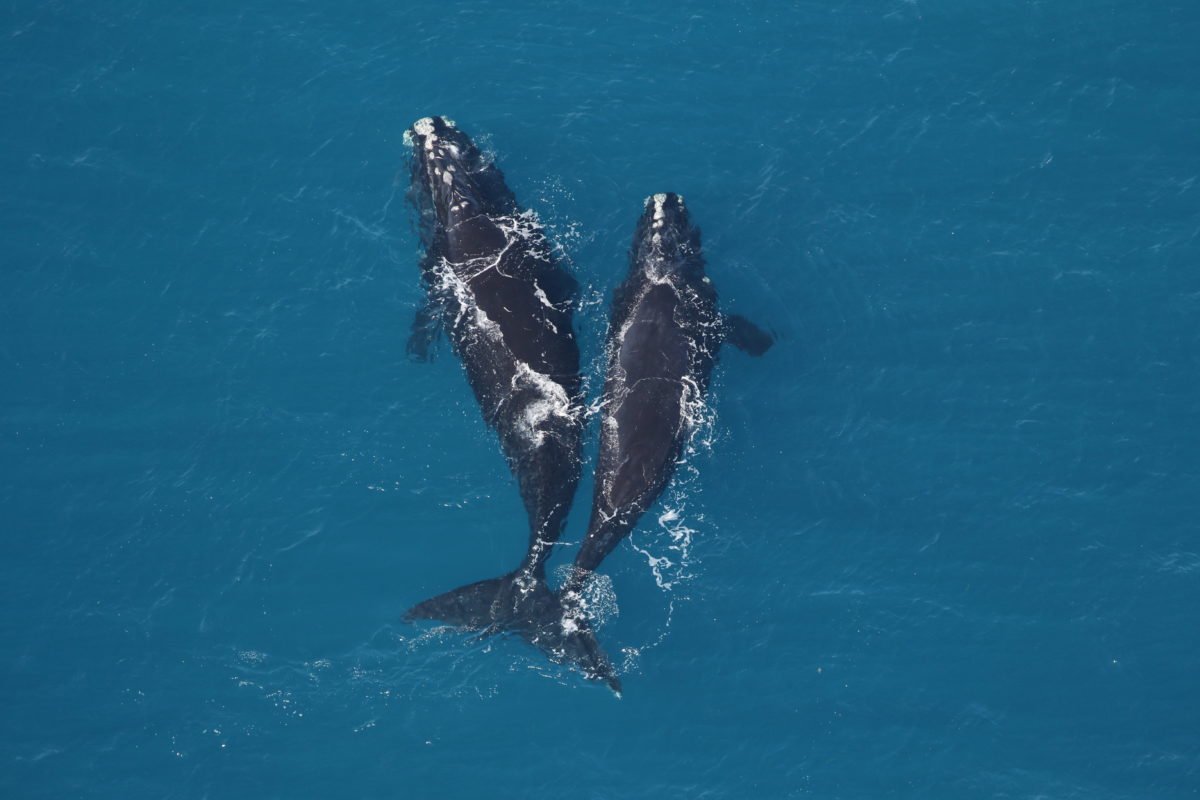

One of the most critically endangered populations of large whales in the world, the estimated number of remaining North Atlantic right whales (Eubalaena glacialis) has fallen to less than 450 individuals. Found primarily in the northeast Atlantic, this species was aggressively exploited by whalers for their oil and blubber stores for hundreds of years. While legislation like the Endangered Species Act (ESA) and Marine Mammal Protection Act (MMPA) have thankfully helped protected species like this right whale since the 1970s, they’re still incredibly prone to fishing gear entanglement and ship collisions. Protecting these whales through multifaceted initiatives must continue to be a priority in order for this species to thrive.
Hawaiian Monk Seal
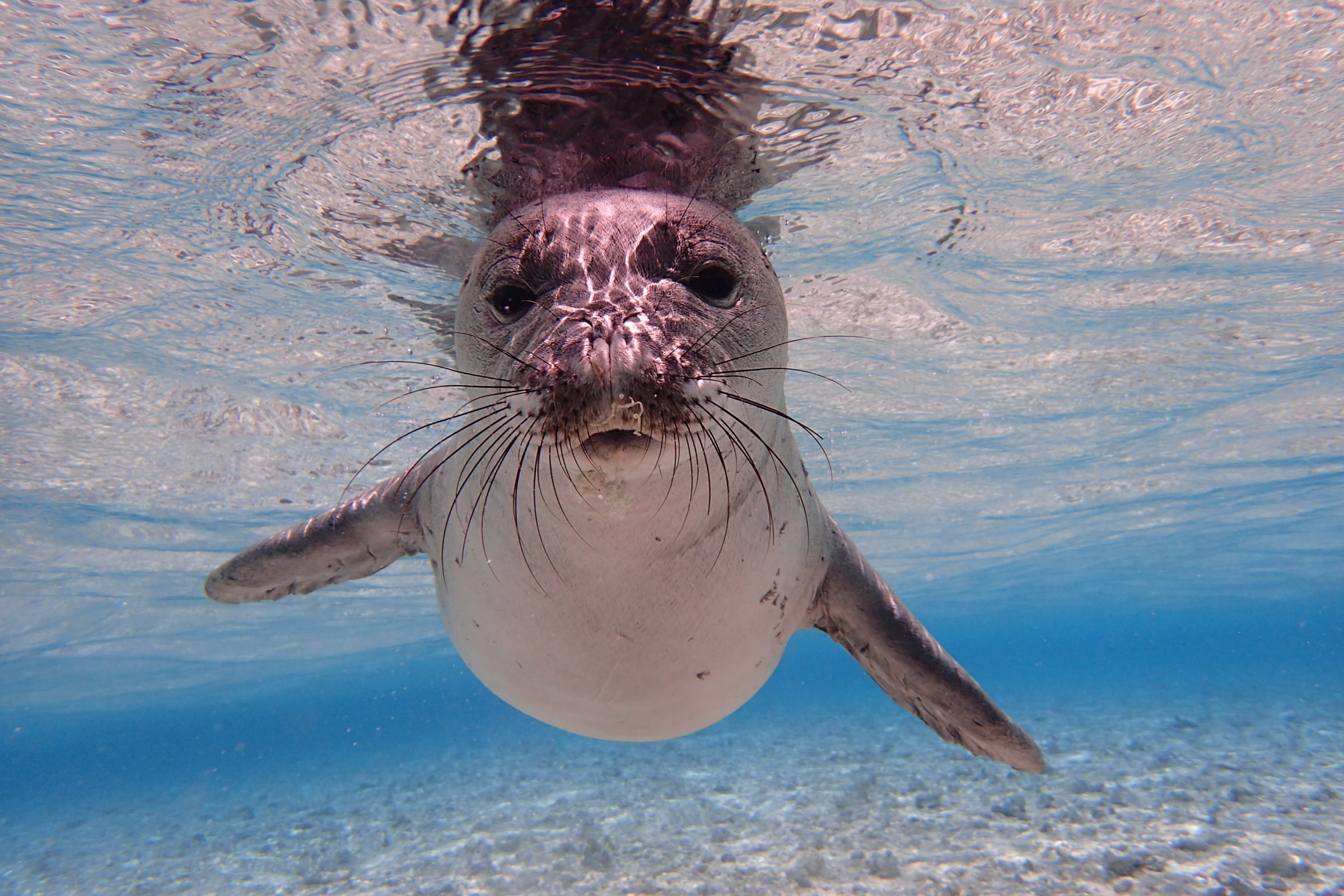

One of the most endangered of the world’s marine mammals, the Hawaiian monk seal (Neomonachus schauinslandi) faces numerous threats today, from disease to fishing gear entanglement and even food availability. While there are multiple protections in place to protect this species, their numbers are still struggling. There’s estimated to be only around 1,400 individuals left in the wild, and their favorite hangout spots (sandy beaches and reefs just off the shore) are frequently littered with plastic pollution. Exclusively found in the Northwest Hawaiian Islands, these animals need trash-free environments to help keep them from going extinct. Similar population patterns were followed with their cousins, Mediterranean monk seals and Caribbean monk seals. There are only a few hundred left in the Mediterranean, and sadly, the Caribbean’s monk seal population went extinct over forty years ago. We can’t let this happen to the Hawaiian monk seal!
Hammerhead Shark
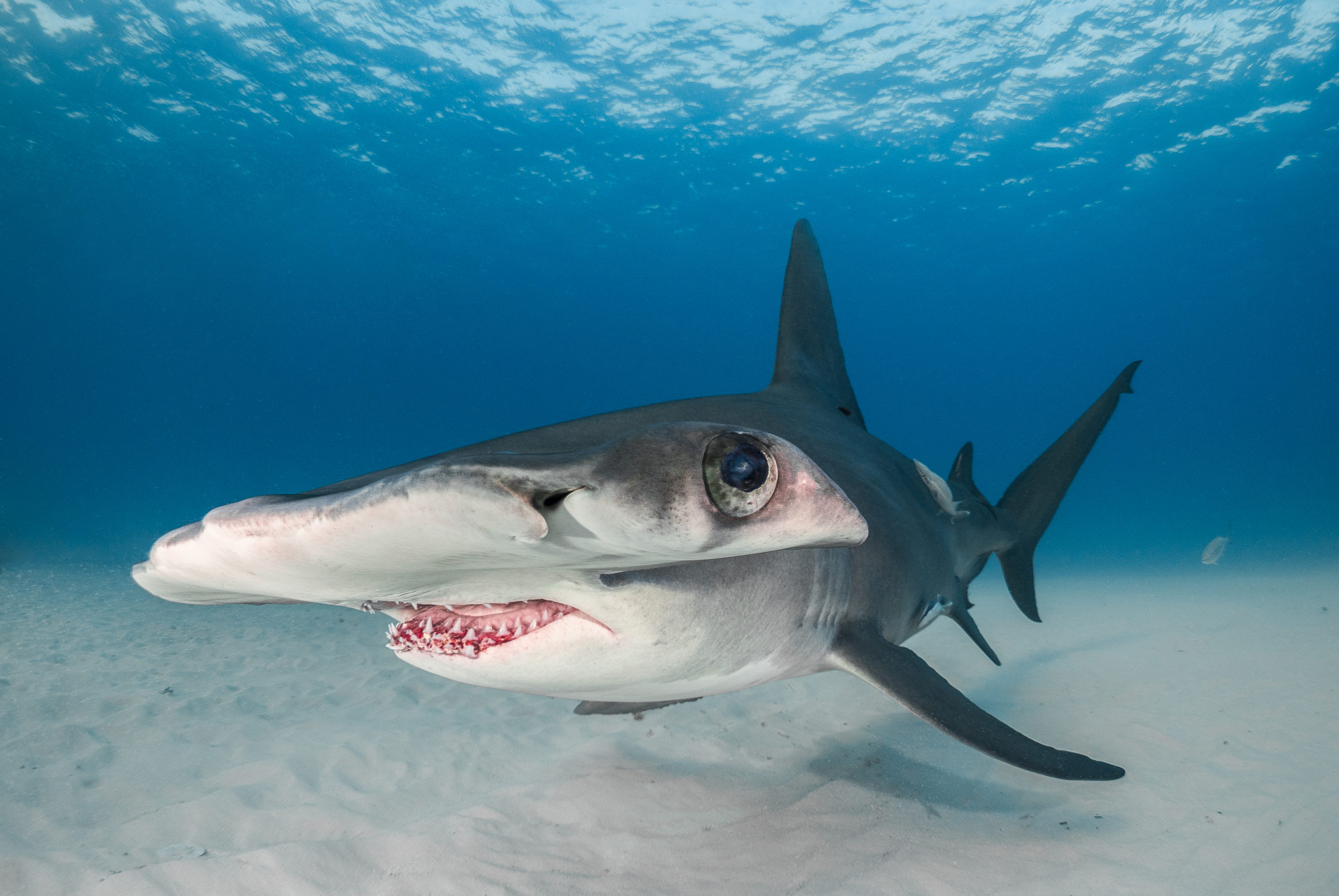

One of the most recognizable of all sharks, hammerheads (Sphyrnidae) are actually classified into nine different species—the majority of which are facing threats to their survival. Currently, the great hammerhead (Sphyrna mokarran) and scalloped hammerhead (Sphyrna lewini) are both listed as endangered, and the smooth hammerhead (Sphyrna zygaena) is listed as Vulnerable (VU). Hammerheads face many threats that other shark species do, too, such as entanglement in marine debris and being caught as bycatch. Their livers are also harvested for oils that are an ingredient in some vitamins today, and quite sadly, they’re still hunted for their fins for shark fin soup. When their fins are removed, the sharks are dumped back into the water, unable to continue to swim and ultimately die. Without sharks, the food chains in marine ecosystems become wildly imbalanced, and we truly do need these species to thrive in order for our ocean to be truly healthy!
Stay up to date with ocean news!
Sign up for our emails
Whale Shark
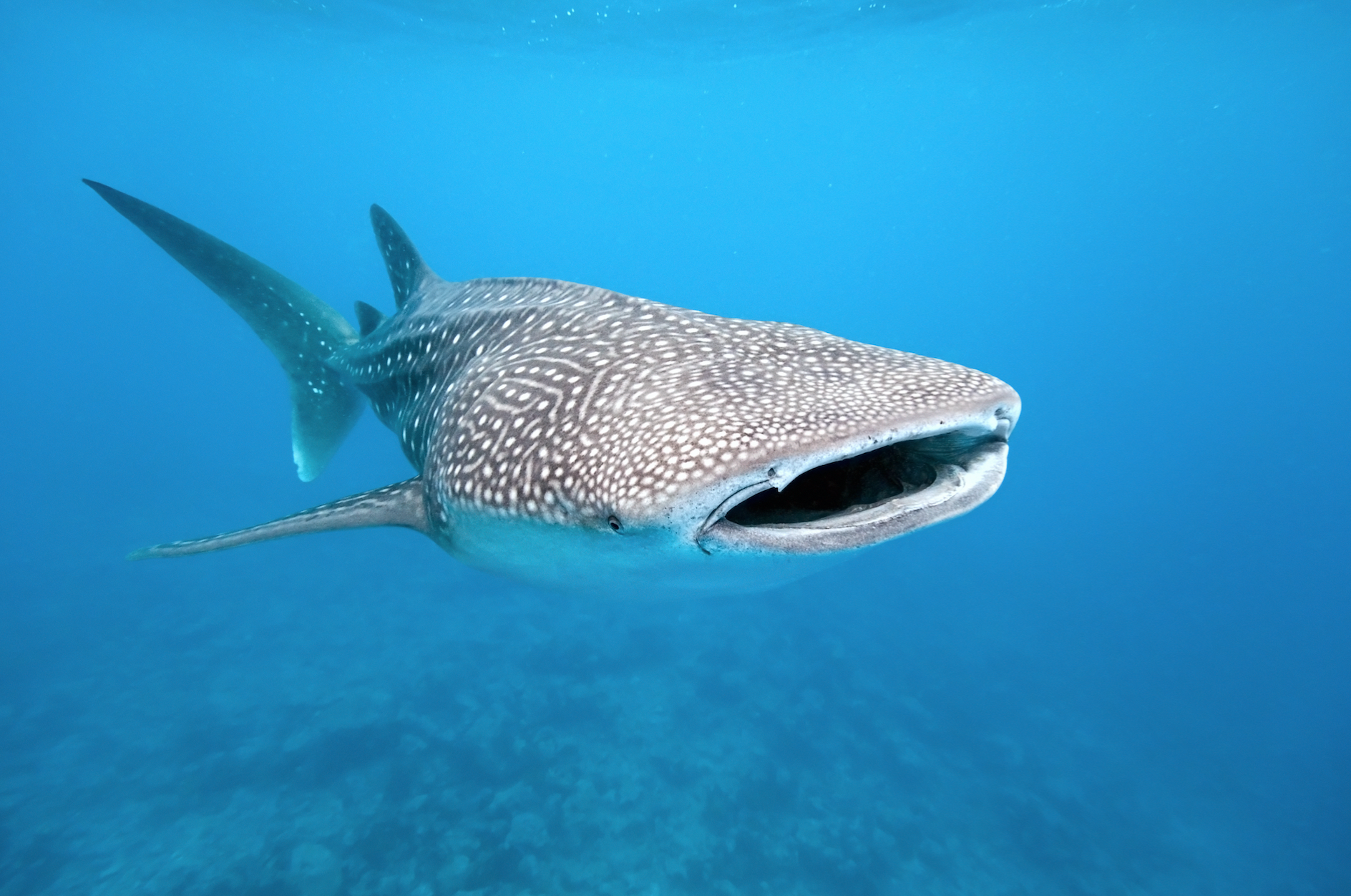

Affectionately considered the gentle giants of the ocean, whale sharks (Rhincodon typus) are jaw-dropping creatures to behold: they can grow to be up to 40 feet long and tip the scales at around 20,000 pounds! Amazingly, while adults have no natural predators, whale sharks still join the list of marine species who have threatened populations, with reclassification that escalated from Vulnerable (VU) to Endangered (EN) in 2016. Today, their biggest threats include bycatch, vessel strikes, and marine debris. As filter feeders, whale sharks take in large amounts of seawater at a time, pushing primary food sources like zooplankton through a unique filtering apparatus within their mouths. Unfortunately, microplastics are also able to enter through these filtering systems. Since plastics never degrade, they break down into tiny pieces over time, which are then able to be consumed by the filter feeders. Between the invasion of pollution in their daily food consumption to the dangers of being caught in fishing gear, the whale shark’s classification as an endangered species is largely due to anthropogenic, or human-induced, threats
Kemp’s Ridley Sea Turtle
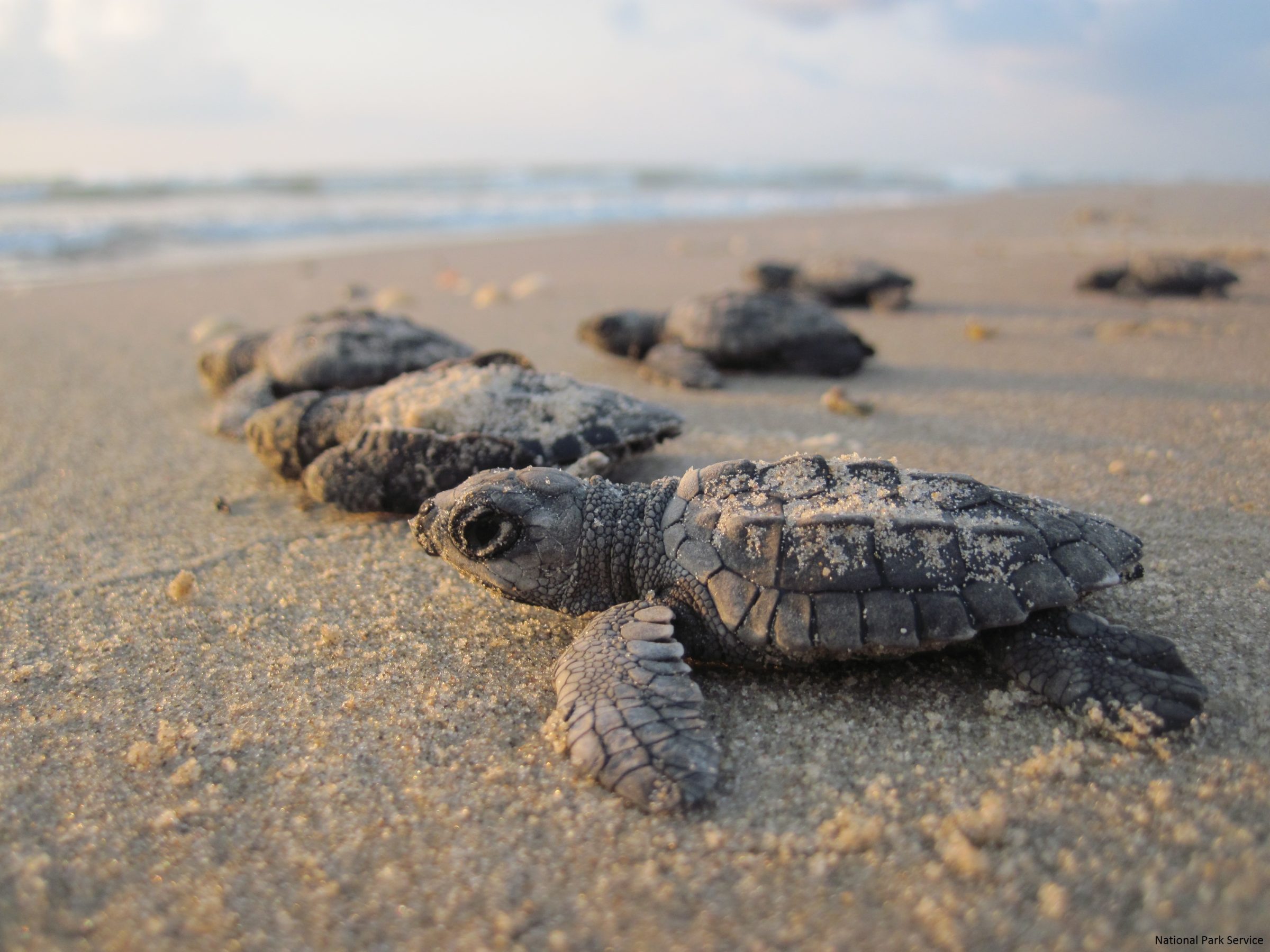

With a worldwide female nesting population of just about 1,000, the Kemp’s ridley (Lepidochelys kempii) is the most endangered sea turtle in the world, currently listed by the IUCN as Critically Endangered (CR). Fun fact: out of all sea turtles, they’re also the smallest, weighing about 100 pounds (compare that to the leatherback, the largest sea turtle, which can grow to be a whopping 2,000 pounds)! Kemp’s ridleys are also highly migratory, and sadly, they often encounter frequent threats from marine debris like ghost fishing gear and plastic pollution (they’ve been known to mistake plastic bags for their favorite snack, jellyfish). With this, it’s crucial—and quite alarming—to note that out of all seven species of sea turtles that call U.S. waters home, six of them are listed by the International Union for the Conservation of Nature (IUCN) are either Vulnerable, Endangered, or Critically Endangered. Can you imagine a world without sea turtles?
Bryde’s Whale
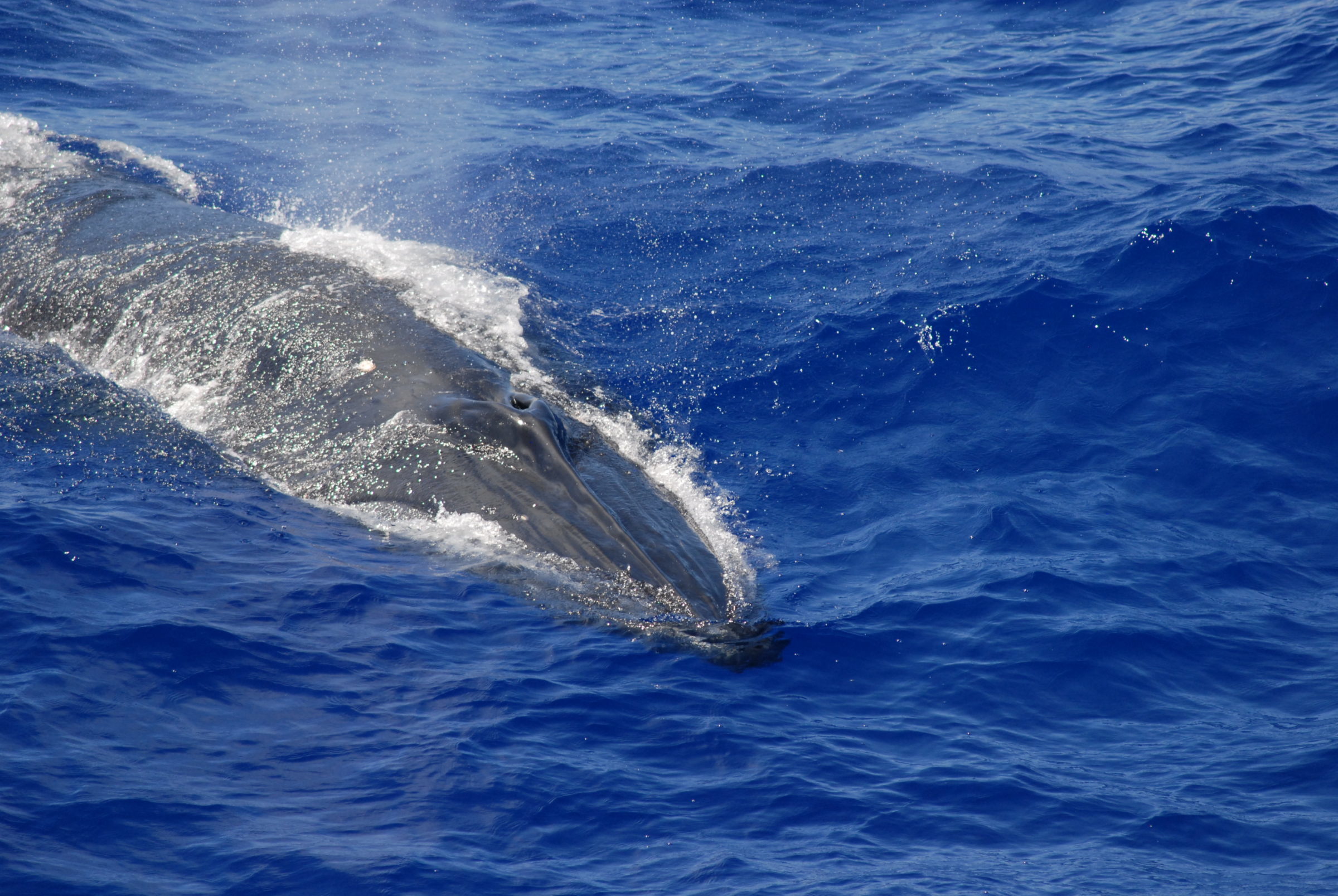

With a shockingly depleted population of just 33 individuals, the Bryde’s (pronounced BROO-dus) whale (Balaenoptera edeni) qualified for endangered status in 2014, but only gained designation as protected under the Endangered Species Act this year. While we applaud this designation, the plans for this species’ recovery are noted as full of ‘potential potholes.’ Ultimately, the toxic combination of threats like offshore drilling and exposure to oil and failed pregnancies for this species could still prove to be dangerous. We need to communicate to our nation’s leaders that we need to keep precious threatened species like these top-of-mind as oil and gas development discussions occur, as such activities present an enormous threat to endangered wildlife. Join us in taking action to save a species truly on the brink of extinction.
Speaking up is the only way we can give these animals their best shot at recovery.
The post These Endangered Marine Animals Need Your Help appeared first on Ocean Conservancy.
Read the full article at: https://oceanconservancy.org/blog/2019/05/16/endangered-marine-animals-need-help/



